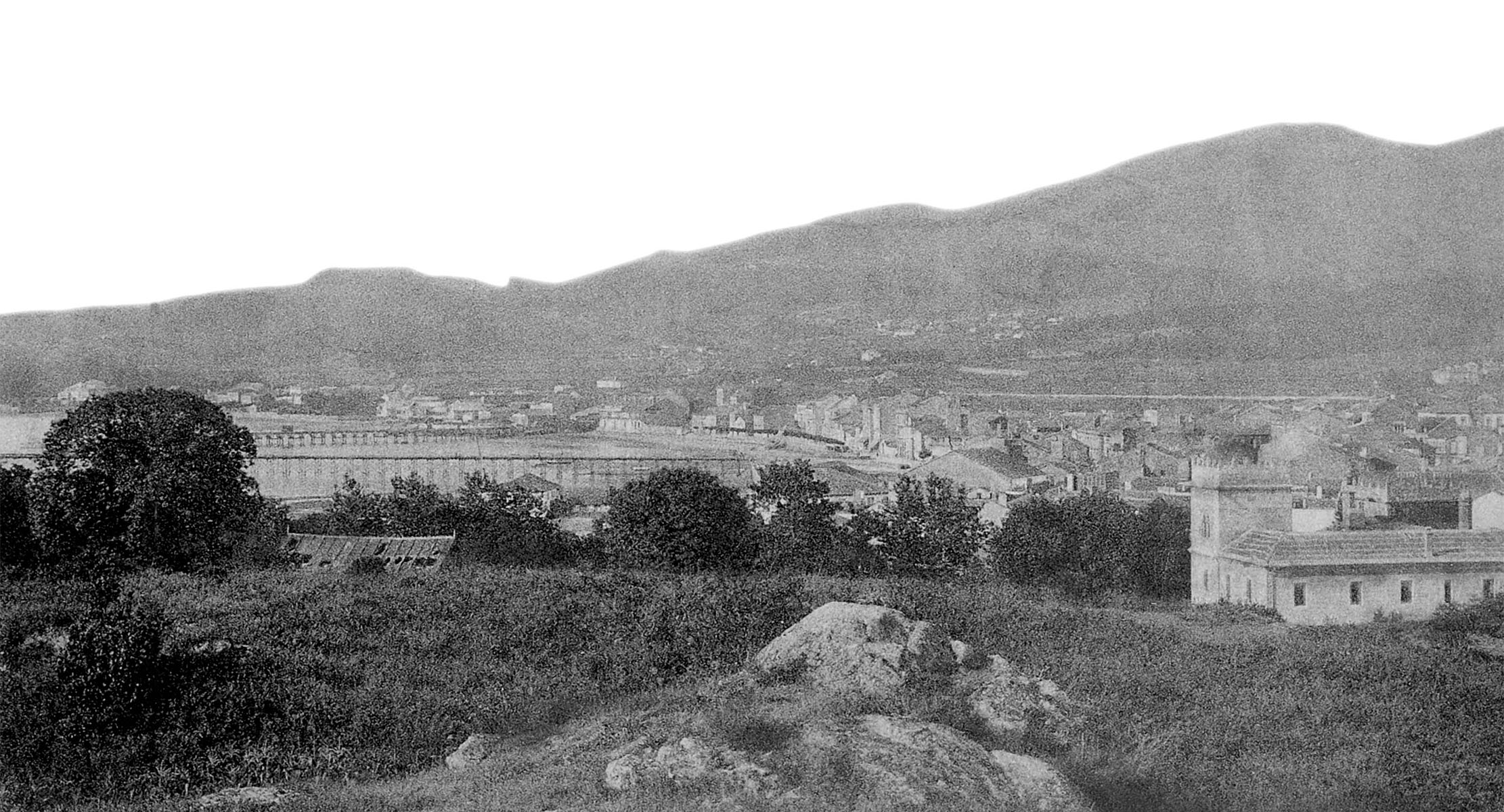
The Castro de Alobre is one of the most important archeological sites in the north-west of the peninsula. It is located on the peak of a hill known as O Montiño and at the water’s edge in a well-protected inlet. Apart from its strategic location, it is an urban settlement which makes it different from many other sites of the late Bronze Age.
Moreover, Alobre is the birthplace of today’s Vilagarcía de Arousa. It is not surprising that the original quarter of the town, close to the settlement, is still called O Castro. The settlement has two main en-trances, one from Vistalegre, going up a staircase or a ramp located just after an arch that works also as a bridge and connects the pazo – manor house – with the Vistalegre convent. Another one going through Valdés Bermejo botanic park which was known as O Castriño – little settlement- what un-doubtedly connected both areas, the park and the settlement.
Alobre is now in the process of becoming a museum after several excavation campaigns which recorded more than 20,000 findings. Some of them proved to be of great historic, ethnographic and artistic value , which confirmed, as what was expected, the strategic and commercial importance of this settlement, the origin of the city we have today. According to researchers, the occupation of Alobre dates back to the 1st century BC up to the 3rd century AD, being at its height under Augustus’ Empire and the Julio-Claudian dynasty.
The settlement consists of three tiered areas delimited by defensive structures, perfectly adjusted to its hillsides with the aim of making access to the settlement more difficult.
The excavations have revealed an upper area or oval crown slightly decentered with respect to the rest of the site. The second area consists of an inferior terrace of diverse width which stretches from north to south with a four-meter gradient. Finally, in the western area there is a second terrace which has a simi-lar gradient but stretches to the south.
After a pleasant walk either from Vistalegre or the botanic park, the visitor will be able to discover that structure and observe the remains of various constructions as well as the vestiges of a hypocaust, i.e. the ingenious system to heat the floor by heating water used by Romans in their baths and thermae. Likewise, the vestiges of a “concheiro” , an enormous area of about 100 m2 x 80 cm of height used for storing remains of clams, mussels, blades and cetaceans, as well as bones of cattle and of some other animals which might well be bears. All this helps us understand quite clearly the way of life of those first inhabitants of what, with the pass of the time, would become Vilagarcía de Arousa.
To the discoveries, in the early 20th century, of a Roman altar – today in the Museum of Pontevedra- and of a Roman necropolis made up of thirty graves of different types, recent excavations have added 20,000 other pieces
amongst which, worthy of mention are a disc fibula, a fibula similar to the Alesia type, which do not abound, and another one used to fasten a cuirass, a curved-blade knife which might well be Gaelic, as well as numerous coins of different Roman emperors.

Address: Travesía Pablo Picasso, 2, 36600 Villagarcía de Arosa, Pontevedra
E-mail: turismo@vilagarcia.gal / oficinaturismo@vilagarcia.gal
Phone: 986 50 12 27 / 647 783 469 (Tourist information Office).
Visits: Any time of the year. Free entrance.